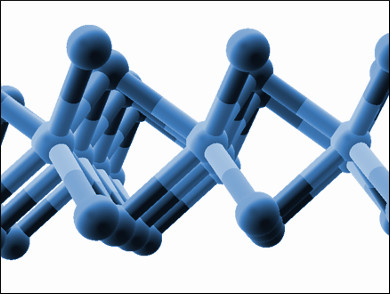Tungsten diselenide (WSe2) is a transition metal dichalcogenide with a layered structure. Ji-Ming Song and colleagues, Anhui University, China, have found that WSe2 nanosheets are highly efficient catalysts for converting benzylamines into benzylimines.
The team synthesized WSe2 nanosheets via a simple colloidal method using two tungsten and selenium-based precursor solutions. The selenium precursor solution contained selenium powder, oleylamine (OLA), and 1-dodecanethiol. The tungsten precursor solution contained tungsten hexachloride, OLA, oleic acid, and 1-octadecene. The resulting nanosheets were collected by centrifugation.
In the presence of the WSe2 nanosheets and under visible-light irradiation, different amines underwent an oxidative coupling reaction to give imines. The reaction gave yields up to 100 % and the catalyst was found to be recoverable and reusable, maintaining a high yield after five uses.
The researchers have proposed a catalytic mechanism: Under photoirradiation, electron-hole pairs are created on the surface of the WSe2 catalyst and molecular oxygen is converted into superoxide radicals through an electron-transfer mechanism. At the same time, the benzylamine molecules are oxidized into benzylammonium cations by the “holes”. Hydrogen is then abstracted from the benzylammonium cation radical, and the resulting intermediate reacts with water and another amine to form the desired imine product.
- Synthesis of ultrathin WSe2 nanosheets and their high-performance catalysis for conversion of amines to imines,
Bing-Qian Zhang, Jing-Shuai Chen, He-Lin Niu, Chang-Jie Mao, Ji-Ming Song,
Nanoscale 2018.
https://doi.org/10.1039/c8nr05954c




